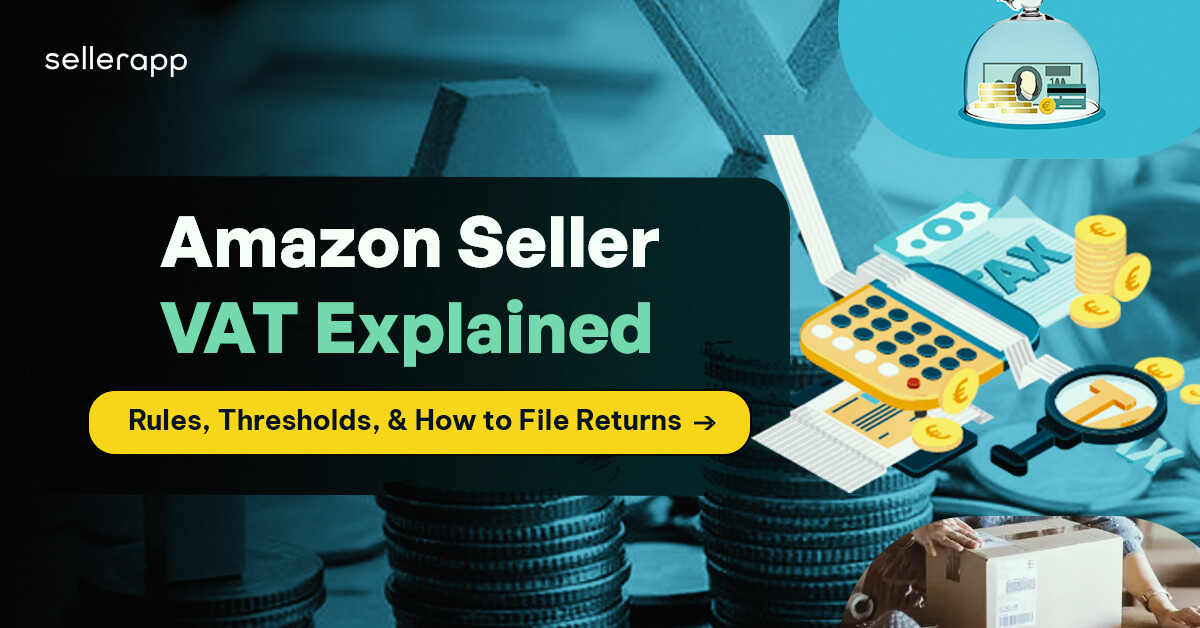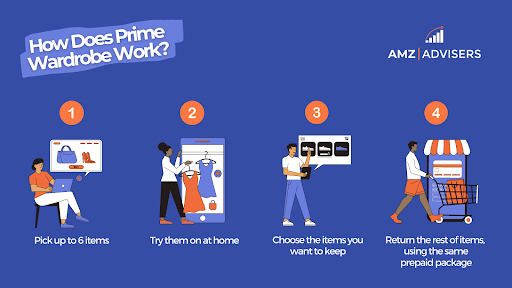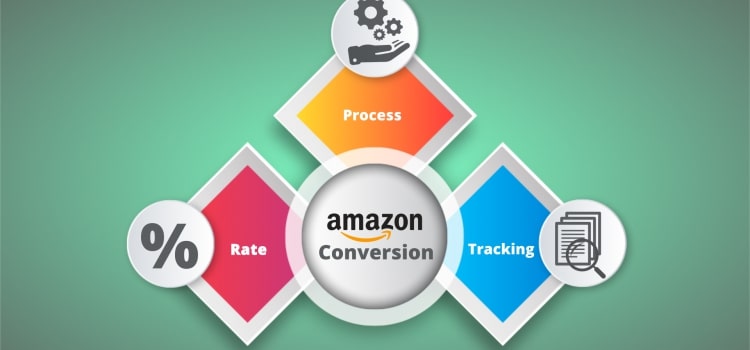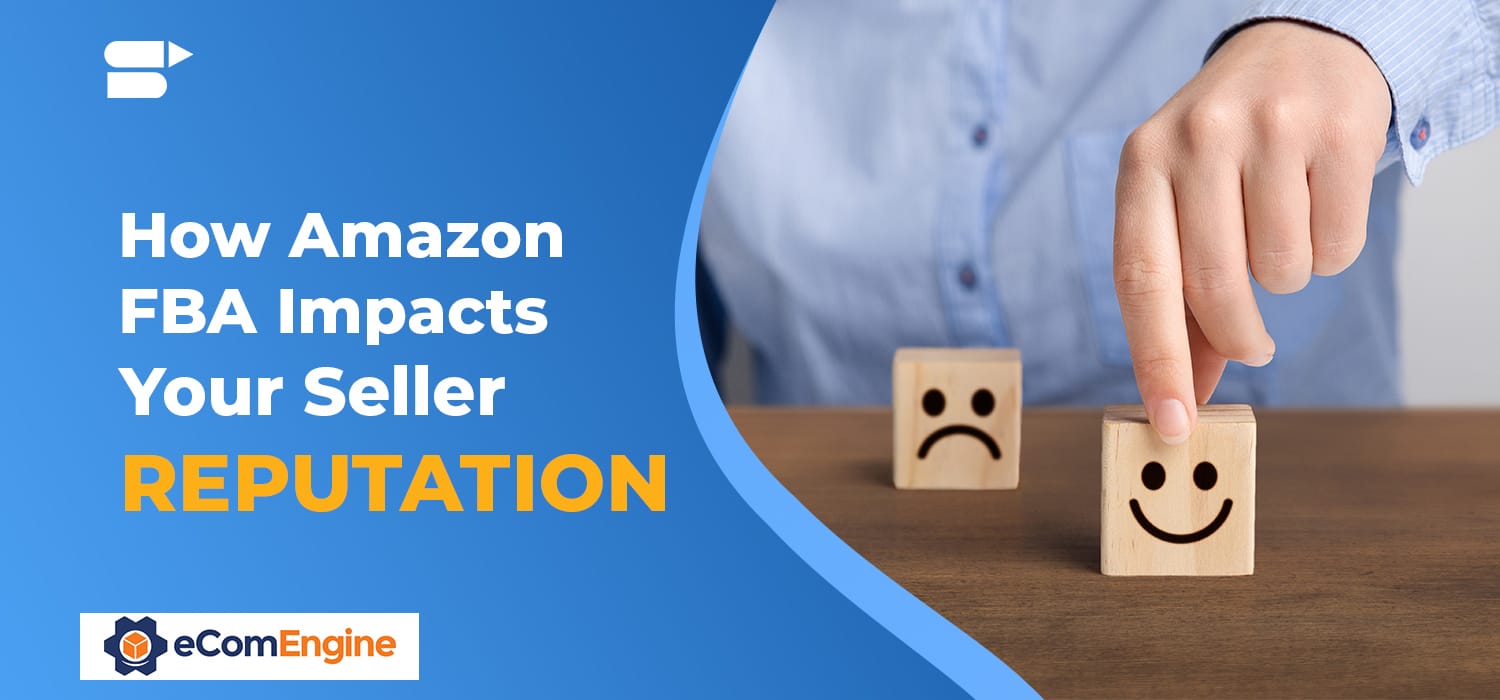Amazon Seller VAT Explained: Rules, Thresholds, and How to File Returns

Selling on Amazon’s European marketplaces like Amazon UK and the sites opens up major opportunities for your business growth.
But it also comes with the need to understand European VAT (Value Added Tax) and handle taxes properly.
If you get the VAT wrong, you risk fines, product seizures, or your Amazon seller account being shut down completely.
In this guide, we’ll explain everything you need to know as a seller about VAT when selling on Amazon in Europe:
In this guide:
- What is VAT?
- How VAT Differs from US Sales Tax
- VAT for Distance Selling
- What if I Ignore VAT on My Amazon Store?
- Thresholds and VAT Rates by Country
- The Pros and Cons of Registering for VAT
- How to File VAT Returns
- Can You Sell on Amazon Without Registering for VAT in the EU or UK?
- How to Claim Back VAT on Your Amazon Seller Fees
- Final Thoughts
What is VAT?
VAT stands for Value Added Tax. It is a consumption tax charged to Amazon sellers for most goods and services sold in the UK and EU.
VAT is similar to sales tax in the US, in which sellers must collect and remit to state tax authorities where they have a nexus.
How Does VAT Work?
Every country in the EU has its own VAT rules. But here’s how it usually works:
- When a manufacturer buys raw materials, they pay VAT on the purchase.
- When they sell their finished product to a wholesaler, the wholesaler pays VAT.
- The wholesaler then pays VAT when they sell the product to a retailer.
- Finally, the retailer charges VAT to the end consumer when they purchase the product.
Each business collects sales VAT and remits it to the respective country’s tax authority. They can also reclaim the VAT paid on business expenses. This input VAT is deducted from the output VAT collected.
For example:
- A manufacturer pays £100 in VAT on raw materials.
- They sell the finished product to a wholesaler for £500 + £100 VAT.
- The wholesaler has £100 VAT to remit but can deduct the £100 input VAT.
- Net VAT payable by the wholesaler is £0.
So, while consumers ultimately pay the VAT, it passes through the entire supply chain with businesses responsible for collecting, reporting, and remitting applicable VAT.
VAT registration is required in each country where a business has a taxable presence based on factors like inventory storage, company registration, distance sales thresholds, and more.
How VAT Differs from US Sales Tax
There are some key ways that VAT in Europe functions differently than sales tax in the US:
| Feature | VAT in Europe | Sales Tax in the US |
|---|---|---|
| Payable on Import | Required for inventory shipped to EU | No sales tax on goods sent to US warehouses |
| Inclusion in Sale Price | VAT is included in the list price of the product in the EU. | Sales tax is added to the list price in the US. |
| Impact on working capital | Import VAT may lead to a substantial initial cash outlay for non-EU-based sellers. | No sales tax is paid until the final product sale in the US. |
| Distance selling thresholds | Each EU country has a threshold for sales from abroad. Exceed it, and you must register for VAT in that country. | There are no similar rules for US sales tax. |
VAT for Distance Selling
Distance selling occurs when a business sells and ships goods from one EU country to an end consumer located in another EU country.
For example, a company based in France ships products directly to customers in Germany. Or a UK business mails orders to buyers in Italy.
Distance selling has increased exponentially with the rise of e-commerce and cross-border trade. This has created challenges for EU tax authorities regarding VAT collection.
It would be administratively infeasible if they had to collect VAT from every business shipping goods internationally.
But if they didn’t collect VAT from overseas sellers, it would be a disadvantage for domestic companies who have to charge VAT. And less overall tax would be collected.
To balance these factors, distance selling thresholds were implemented.
How Distance Selling Thresholds Work
Each EU country sets a distance selling threshold amount for inter-EU trade:
- If a business sells less than the threshold to a particular country, it only needs to collect VAT in its home country.
- Once the threshold for a given country is exceeded, the seller must register for VAT in that country and charge VAT at the rate in force there.
For example, let’s say the current distance selling threshold is €10,000 for all EU countries. When you, a UK-based business, exceed the €10,000 selling threshold or expect to exceed it in the next 30 days, you must register for German VAT and file returns regularly.
Before you meet the distance selling threshold, you can charge VAT at your local rate.
Once you have registered for VAT in the destination country, you need to collect VAT at the destination country’s rate.
Why Distance Selling Thresholds Exist
Distance selling thresholds aim to balance several factors:
- Make VAT collection administratively feasible for tax authorities and businesses.
- Enable fair competition by requiring overseas sellers to charge local VAT once they reach a reasonable level of sales.
- Allow smaller sellers to deal with only their home country’s VAT initially.
- Provide clarity for sellers on when other country registrations are triggered.
Without distance selling thresholds, tracking and collecting VAT from all sellers shipping
internationally would be near impossible. This system aims for a pragmatic compromise.
Tips for Managing Distance Selling VAT
Here are some tips for Amazon sellers managing distance selling VAT obligations:
- Monitor sales by destination country and forecast when thresholds may be exceeded.
- Once a threshold is nearing, register for VAT in that country proactively.
- Consider using a VAT provider to manage registrations and filings across multiple countries.
- Charge VAT rates accurately based on shipping destination before and after exceeding thresholds.
- File returns on time to avoid penalties and issues with tax authorities or Amazon.
Distance selling VAT can be complex but is manageable with preparation and the use of expert help. Staying on top of your obligations will allow you to expand internationally without hassles.
What if I Ignore VAT on My Amazon Store?
It can be tempting not to worry about VAT if you are a smaller seller. But it can carry big risks.
While you may get away with it initially, tax authorities ramp up enforcement against non-compliant overseas sellers.
Crackdowns are happening across all e-commerce platforms as governments aim to collect owed revenue and level the playing field for domestic sellers.
HMRC has been aggressively pursuing overseas Amazon sellers who have not properly registered for VAT in the UK.
Failure to satisfy HMRC’s requirements could result in Amazon suspending your selling privileges until issues are resolved.
Additionally, when any inventory enters an FBA warehouse in the UK, you have established a taxable presence there and must register for VAT. There is no threshold – VAT registration is required immediately.
The risks of ignoring this obligation include:
- Your products are being seized from UK warehouses by HMRC.
- Being assessed for years of back taxes and late fees on all UK sales.
- Large financial penalties for continued non-compliance.
- Complete loss of ability to sell in the lucrative UK market.
With the time and money invested in selling internationally, protecting your Amazon business by getting VAT-compliant is strongly recommended.
Note: If you ship inventory into UK FBA warehouses or exceed the £70,000 UK distance selling threshold, you must register for a UK VAT number.
There is no threshold if inventory is stored in the UK – you must register for VAT immediately.
Do I Need to Set Up a Local UK Company?
You don’t need to establish a local UK or European company to sell on Amazon in those markets.
As a non-EU seller, you can:
- Register for VAT in each country you have inventory or sales in.
- Appoint a fiscal representative to manage VAT on your behalf.
- Pay taxes on profits to tax authorities in your home country.
Setting up a local EU or UK company has advantages, like potentially faster VAT processing. But it also means:
- More complex accounting and corporate tax filings.
- Higher tax rates than the US.
- Separate bank accounts and transfer pricing.
For most Amazon sellers, remaining a non-EU seller simplifies things greatly. Just be VAT compliant.
Thresholds and VAT Rates by Country
VAT rules vary across the UK and Europe. Here are the standard VAT rates and thresholds to be aware of:
| Country | Standard VAT Rate | EU Distance VAT Threshold |
|---|---|---|
| Austria | 20% | € 35,000 |
| Belgium | 21% | € 35,000 |
| Bulgaria | 20% | BGN 70,000 |
| Croatia | 25% | HRK 270,000 |
| Cyprus | 19% | € 35,000 |
| Czech Republic | 21% | CZK 1,140,000 |
| Denmark | 25% | DKK 280,000 |
| Estonia | 22% | € 35,000 |
| Finland | 24% | € 35,000 |
| France | 20% | € 35,000 |
| Germany | 19% | € 100,000 |
| Greece | 24% | € 35,000 |
| Hungary | 27% | € 35,000 |
| Ireland | 23% | € 35,000 |
| Italy | 22% | € 35,000 |
| Latvia | 21% | € 35,000 |
| Lithuania | 21% | € 35,000 |
| Luxembourg | 17% | € 100,000 |
| Malta | 18% | € 35,000 |
| Netherlands | 21% | € 100,000 |
| Poland | 23% | PLN 160,000 |
| Portugal | 23% | € 35,000 |
| Romania | 19% | RON 118,000 |
| Slovakia | 20% | € 35,000 |
| Slovenia | 22% | € 35,000 |
| Spain | 21% | € 35,000 |
| Sweden | 25% | SEK 320,000 |
| Switzerland | 8.1% | N/A |
The Pros and Cons of Registering for VAT
Registering for VAT before meeting the standard turnover threshold has benefits and drawbacks. Let’s look into it:
The Pros of Early VAT Registration
- Appear as an Established Business: Being VAT registered can make your business look more legitimate and established, even if you are still small or new. This can help build credibility with suppliers, partners, and customers.
- No Threshold Worries: Once registered, you don’t need to worry about monitoring turnover and staying under VAT thresholds. You can focus fully on growth rather than minimizing sales.
- Reclaim VAT on Expenses: You can reclaim VAT paid on business expenses immediately after registering. This recoups some of your costs.
- Cash Flow Benefits: VAT does not have to leave your account immediately. You hold onto it between filing periods, which can ease cash flow.
The Cons of Early Registration
- Added Administration: You must file VAT returns regularly, which takes administrative work. New processes may need implementation.
- Filing Errors: If returns are prepared incorrectly, you may face financial penalties and interest. There are complexities to stay on top of.
- Ongoing Costs: To outsource returns, you must pay accountant fees continuously. Or invest time doing it in-house.
- Increased Responsibilities: Compliance becomes another responsibility to manage. Your business gets more complex overall.
So, in summary, voluntary registration has some advantages but also increases administrative burdens.
Weigh these pros and cons for your specific situation before deciding to do early VAT registration.
How to File VAT Returns
Amazon sellers have three main ways to file VAT returns – self-filing, using a tax agency, or using Amazon’s VAT Services. However, each has its own pros and cons.
Self-Filing VAT Returns
Register and submit VAT returns to each country’s tax authority.
You can do it manually by visiting each tax website and submitting forms or automatically through 3P accounting software.
EU also introduced a One Stop Shop (OSS) and Import One Stop Shop (IOSS) systems in 2021 to simplify VAT filing across the EU.
OSS allows sellers to file one VAT return for all EU sales. IOSS does the same for goods imported into the EU below €150. However, OSS and IOSS have limitations on which countries are included and maximum shipment values, so they may not apply to all situations.
The main benefits of self-filing are that it is free, can be automated to save time, and gives you full visibility into your finances.
However, the main drawback of this method is it’s time-consuming, risks errors as tax laws change, and you may pay more tax than using optimization strategies from professionals.
Using a Tax Agency
Rather than self-file, you can hire an accountant or tax agency to manage VAT compliance. They will handle registrations, calculations, and filings in the required languages for each country.
This saves time for your business, ensures accuracy and compliance with the latest regulations, and avoids language barriers. The main drawback, however, is the cost of paying for their professional services.
Tax agencies often have ways to minimize tax obligations legally and can consolidate filings across countries into one relationship. This simplifies compliance as you expand into more EU markets.
Using Amazon’s VAT Services
If you sell primarily on Amazon, you can use their VAT Services to manage registrations and filings. One-time fees cover registration and an EORI number in the UK and one EU country.
Recurring monthly fees start at €33.30 for one country. Fees rise as you add more countries, up to a maximum of €142/month for seven countries. This includes all required VAT and Intrastat filings. Extra fees apply for fiscal representation.
It helps to keep the tax management within Amazon, only paying for what you need as you scale to new countries and leveraging Amazon’s registration technology and support.
However, there are downsides, such as costs and the fact that sellers don’t want to give Amazon their sales data from other channels.
Choosing the Right VAT Filing Option
The best option depends on your specific situation. Smaller sellers operating in one marketplace may find self-filing the cheapest and easiest method.
Larger sellers expanding across the EU will likely benefit from the consolidated compliance and optimization of a tax agency or VAT Services on Amazon.
When deciding, compare costs against each option’s time savings and potential VAT reductions. Also, consider which provides the right balance of control over your data and simplifies the filing process as you grow your business.
Testing different options can help determine the best fit. For example, you can start with self-filing or Amazon VAT Services for one country and switch to a tax agency as you scale across multiple countries.
Whatever solution you choose, ensure you fully understand your VAT obligations, registrations, calculations, and deadlines to remain compliant as your e-commerce business expands.
Can You Sell on Amazon Without Registering for VAT in the EU or UK?
You may not need to register if you are below the distance selling thresholds. But there are risks to continuing selling without VAT:
- Once you exceed a VAT threshold, all previous sales become liable for VAT due. Fines can be assessed on late payments.
- Amazon may suspend your account if they believe you should be registered for VAT somewhere.
- You have VAT obligations as soon as any inventory enters an EU country.
- Tax authorities are getting more stringent about pursuing overseas sellers for VAT.
We recommend registering for VAT once you sell in Amazon UK or EU markets. The thresholds are not that high, and getting compliance right from the start avoids bigger issues down the track.
How to Claim Back VAT on Your Amazon Seller Fees
If you are a UK business selling on Amazon, you have likely been charged 20% VAT on top of your Amazon seller and FBA fees.
However, as a VAT-registered business, you are entitled to reclaim this VAT that Amazon has charged. This can result in significant savings over time.
Who Can Claim Back VAT on Amazon Fees?
You must be one of the following to reclaim the VAT on fees:
- A UK VAT-registered business, regardless of turnover.
- A UK non-VAT registered business with a turnover above the VAT threshold of £85,000.
- A UK sole trader or limited company, even if not VAT registered.
How Much VAT Can You Claim Back?
To determine the amount of VAT you can reclaim:
- Download your total fees report from Amazon Seller Central to see your fees over time.
- Add up the total fees paid over the period you want to claim for.
- Take 20% of this amount – this is the VAT.
For example, if your total Amazon fees over 4 years were £48,000, the VAT charged at 20% would be £9,600.
Steps to Reclaim VAT on Amazon Fees
Follow these steps:
- Email Amazon Seller Support with your seller ID and explain you are entitled to receive fees exempt from VAT as a business.
- Provide any evidence requested proving you are a business, such as your VAT registration number, UTR, or company registration documents.
- Ask for confirmation that VAT will no longer be charged on fees moving forward.
- Request a refund of the VAT paid on fees to date, specifying the total amount calculated above.
- The VAT amount will be credited to your account balance if your refund is confirmed.
Final Thoughts
Learning the basics of VAT is essential if you plan to access the UK and European markets via Amazon.
While VAT seems complex initially, with the right help, it becomes a background process.
The key is acting early – getting expert advice, registering for VAT promptly, and outsourcing filing to specialists. Avoid playing catch-up down the road when issues arise.
Be sure to claim back VAT where possible. This provides additional capital to reinvest in growing your business.
While each country has nuances, the overall process becomes routine over time. You’ll be able to focus on sales and expansion rather than tax worries.
Don’t let VAT complexities deter you from accessing the lucrative UK and EU consumer markets. With preparation and support, you can confidently enter these regions and scale your business successfully.










